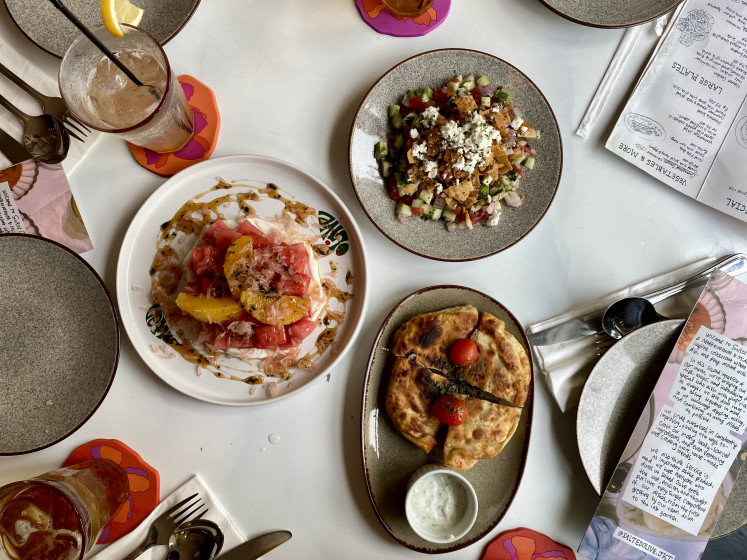Popular Reads
Top Results
Can't find what you're looking for?
View all search resultsPopular Reads
Top Results
Can't find what you're looking for?
View all search resultsThe fragrance of incense
Boom: As the Chinese New Year nears, demand for incense has risen by almost 50 percent
Change text size
Gift Premium Articles
to Anyone
Boom: As the Chinese New Year nears, demand for incense has risen by almost 50 percent.
Splashes can be heard from the footsteps of workers as they process wood powder in a solution of saltpeter about 20 kilometers south of Malang in Bumiaji, East Java.
For the last 11 years, Soebakir has managed one of several small home factories in the region making incense, or joss sticks, locally known as hio.
Traditionally, Chinese-Indonesians use incense as a medium of prayer, a means to revere the deceased and for rituals at temple. The sticks burn with a fragrant smell.
Small-scale manufacturers have blossomed in the Reform era, the 68-year-old said.
'Formerly these factories operated quietly for fear of being searched by security personnel, when I was still a worker. In 2004, I tried to be independent by taking over another person's business,' said Soebakir.
Joss sticks are made from sawdust, both coarse and refined, and bamboo skewers ranging from 50 to 100 centimeters in length. Quality is determined by weather conditions, as it takes at least 3 days to dry the incense in the sun.
'If they aren't totally dried, the incense will drop off,' one worker at the factory, Ngatiah, said. 'Sawdust deliveries have often been late during this rainy season.'
Tradition: According to Chinese tradition, incense, or hio, is a medium of prayer, a means of reverence for the deceased and an instrument for rituals.
After they have been dried, the joss sticks are colored with refined powder and textile colorings. Red is the color for prayers or rituals, while yellows are reserved for funeral ceremonies.
Soebakir sells his incense to Chinese temples throughout East Java for anywhere from Rp 400 (3 US Cents) to Rp 4,000 per stick.
Demand has increased in the run up to the Lunar New Year, locally known as Imlek, as demand has risen by 50 percent over the factory's daily production capacity of 350 sticks, he says.
The low output was attributed to uncertain weather and limited sawdust supplies during high rainfall, thus posing some challenges in fulfilling orders.
Soebakir, however, is undeterred. He says he will keep producing incense as long as the fragrance of joss stick pervades the temples and the Chinese tradition remains preserved by the generations to come.
Slow process: Production is limited by uncertain weather and a scant supply of sawdust during the rainy season.
At work: Joss sticks are made from sawdust, both coarse and refined, and bamboo skewers up to 100 centimeters long.
Entrepreneurial: Kendal Payak village in Bumiaji, East Java, is home to a host of small incense factories.
Photos by Aman Rochman















